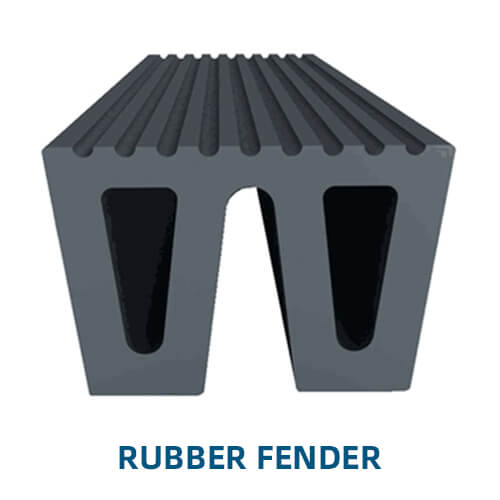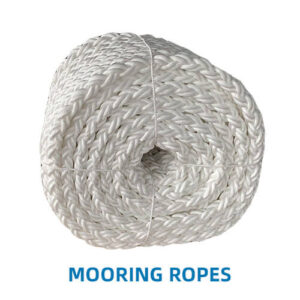Rubber Fender
A rubber fender is a protective device used on ships, docks, and other marine structures to absorb and cushion the impact during berthing and mooring operations. These fenders help prevent damage to vessels and structures by dissipating the energy from collisions and providing a cushioned surface for contact.
[wpforms id=”2623″]
Description
Key Features of Rubber Fenders:
- Material and Construction:
- Rubber Composition: Made from high-quality natural or synthetic rubber, often with additives to enhance durability, flexibility, and resistance to environmental factors such as UV rays, ozone, and saltwater.
- Construction: Rubber fenders are typically designed with a hollow or inflatable core and a tough outer shell. The design helps absorb and distribute impact forces evenly.
- Design and Shapes:
- Types: Rubber fenders come in various shapes and sizes, each suited for different applications and impact conditions. Common shapes include:
- D-shaped: Offers a simple and effective design for protecting docks and vessels.
- Cylindrical: Provides a large contact area and is often used on larger vessels or docks.
- Square: Suitable for situations where a larger surface area is needed.
- Cone-shaped: Ideal for situations requiring a tapered surface to absorb impact from various angles.
- Panel: Flat, rectangular fenders used to cover larger surface areas.
- Custom Designs: Many fenders are custom-designed to meet specific requirements, including unique shapes or sizes for particular applications.
- Types: Rubber fenders come in various shapes and sizes, each suited for different applications and impact conditions. Common shapes include:
- Installation and Mounting:
- Attachment: Rubber fenders can be mounted using various methods, including bolts, clamps, or adhesive. They are typically installed on docks, piers, and ship sides where they will make contact with other surfaces.
- Adjustment: Proper installation is crucial for ensuring that the fender performs effectively. This includes positioning them at the right height and location to absorb impact forces properly.
- Applications:
- Dock and Pier Protection: Used to protect docks and piers from damage caused by the impact of mooring vessels. They provide a cushioning effect to reduce wear and tear on both the dock and the vessel.
- Vessel Protection: Installed on the sides of ships to prevent damage during berthing and mooring. They help absorb the energy from impacts and reduce the risk of hull damage.
- Marine Structures: Used on various marine structures such as oil platforms, floating docks, and jetties to protect against collisions and impacts.
- Performance and Benefits:
- Impact Absorption: Rubber fenders effectively absorb and dissipate impact forces, reducing the risk of damage to vessels and structures.
- Durability: Designed to withstand harsh marine conditions, including saltwater, UV exposure, and physical wear. High-quality rubber fenders have a long service life and require minimal maintenance.
- Flexibility: The rubber material allows the fender to conform to various surfaces and shapes, providing effective protection in diverse situations.
- Maintenance:
- Inspection: Regular inspection of rubber fenders is essential to ensure they are in good condition. Check for signs of wear, tears, or deformation.
- Cleaning: Periodically clean the fenders to remove any debris or buildup that could affect their performance.
- Replacement: Replace fenders that show significant signs of damage or wear to maintain effective protection.
Advantages of Rubber Fenders:
- Effective Impact Protection: Provides excellent cushioning to absorb and reduce the impact forces during berthing and mooring, protecting both vessels and infrastructure.
- Durable and Long-lasting: Made from resilient materials that can withstand harsh marine conditions and frequent impacts.
- Versatile Applications: Suitable for a wide range of marine and industrial applications due to their various shapes and sizes.
- Cost-Effective: Generally offers a cost-effective solution for protecting valuable assets in marine environments.
Considerations for Using Rubber Fenders:
- Sizing and Specification: Ensure that the fenders are appropriately sized and specified for the intended application to provide effective protection and performance.
- Environmental Factors: Consider the environmental conditions where the fenders will be used, including exposure to UV rays, saltwater, and temperature extremes.
- Installation: Proper installation and positioning are crucial for the fenders to perform effectively and provide optimal protection.
Rubber fenders play a vital role in marine operations, offering protection and impact absorption for vessels, docks, and other structures. Their durable and flexible design ensures that they can handle the demands of marine environments and provide long-term protection against collisions and impacts.






